Role of Autophagy in Von Willebrand Factor Secretion by Endothelial Cells and in the In Vivo Thrombin-Antithrombin Complex Formation Promoted by the HIV-1 Matrix Protein p17
- PMID: 32188077
- PMCID: PMC7139864
- DOI: 10.3390/ijms21062022
Role of Autophagy in Von Willebrand Factor Secretion by Endothelial Cells and in the In Vivo Thrombin-Antithrombin Complex Formation Promoted by the HIV-1 Matrix Protein p17
Abstract
Although the advent of combined antiretroviral therapy has substantially improved the survival of HIV-1-infected individuals, non-AIDS-related diseases are becoming increasingly prevalent in HIV-1-infected patients. Persistent abnormalities in coagulation appear to contribute to excess risk for a broad spectrum of non-AIDS defining complications. Alterations in coagulation biology in the context of HIV infection seem to be largely a consequence of a chronically inflammatory microenvironment leading to endothelial cell (EC) dysfunction. A possible direct role of HIV-1 proteins in sustaining EC dysfunction has been postulated but not yet investigated. The HIV-1 matrix protein p17 (p17) is secreted from HIV-1-infected cells and is known to sustain inflammatory processes by activating ECs. The aim of this study was to investigate the possibility that p17-driven stimulation of human ECs is associated with increased production of critical coagulation factors. Here we show the involvement of autophagy in the p17-induced accumulation and secretion of von Willebrand factor (vWF) by ECs. In vivo experiments confirmed the capability of p17 to exert a potent pro-coagulant activity soon after its intravenous administration.
Keywords: AIDS-related diseases; HIV-1; autophagy; coagulation; p17 matrix protein; thrombin-antithrombin complex.
Conflict of interest statement
The authors declare no conflict of interest.
Figures
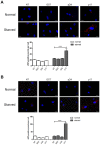
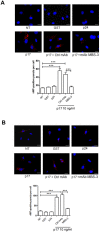
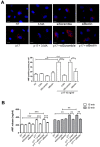
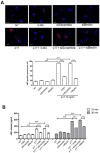
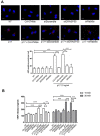
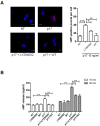
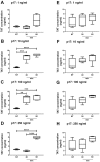
Similar articles
-
Role of Autophagy in HIV-1 Matrix Protein p17-Driven Lymphangiogenesis.J Virol. 2017 Jul 27;91(16):e00801-17. doi: 10.1128/JVI.00801-17. Print 2017 Aug 15. J Virol. 2017. PMID: 28592537 Free PMC article.
-
The HIV-1 Matrix Protein p17 Does Cross the Blood-Brain Barrier.J Virol. 2022 Jan 12;96(1):e0120021. doi: 10.1128/JVI.01200-21. Epub 2021 Oct 20. J Virol. 2022. PMID: 34668776 Free PMC article.
-
HIV-1 matrix protein p17 promotes lymphangiogenesis and activates the endothelin-1/endothelin B receptor axis.Arterioscler Thromb Vasc Biol. 2014 Apr;34(4):846-56. doi: 10.1161/ATVBAHA.113.302478. Epub 2014 Jan 30. Arterioscler Thromb Vasc Biol. 2014. PMID: 24482377
-
HIV-1 Matrix Protein p17 and its Receptors.Curr Drug Targets. 2016;17(1):23-32. doi: 10.2174/1389450116666150825110840. Curr Drug Targets. 2016. PMID: 26302809 Review.
-
HIV-1 matrix protein p17: a candidate antigen for therapeutic vaccines against AIDS.Pharmacol Ther. 2010 Dec;128(3):433-44. doi: 10.1016/j.pharmthera.2010.08.005. Epub 2010 Sep 8. Pharmacol Ther. 2010. PMID: 20816696 Review.
Cited by
-
An mTORC1-GRASP55 signaling axis controls unconventional secretion to reshape the extracellular proteome upon stress.Mol Cell. 2021 Aug 19;81(16):3275-3293.e12. doi: 10.1016/j.molcel.2021.06.017. Epub 2021 Jul 9. Mol Cell. 2021. PMID: 34245671 Free PMC article.
-
The Role of Autophagy in Vascular Endothelial Cell Health and Physiology.Cells. 2024 May 11;13(10):825. doi: 10.3390/cells13100825. Cells. 2024. PMID: 38786047 Free PMC article. Review.
-
Platelets in HIV: A Guardian of Host Defence or Transient Reservoir of the Virus?Front Immunol. 2021 Apr 23;12:649465. doi: 10.3389/fimmu.2021.649465. eCollection 2021. Front Immunol. 2021. PMID: 33968041 Free PMC article. Review.
-
Effect of plasma thrombin-antithrombin complex on ischemic stroke: a systematic review and meta-analysis.Syst Rev. 2023 Feb 14;12(1):17. doi: 10.1186/s13643-023-02174-9. Syst Rev. 2023. PMID: 36788633 Free PMC article.
-
Heparan sulfate proteoglycans remodel SARS-CoV-2 spike conformation to allow integrin interaction and infection of endothelial cells.Front Cell Infect Microbiol. 2025 Apr 3;15:1552116. doi: 10.3389/fcimb.2025.1552116. eCollection 2025. Front Cell Infect Microbiol. 2025. PMID: 40248367 Free PMC article.
References
MeSH terms
Substances
LinkOut - more resources
Full Text Sources
Miscellaneous

